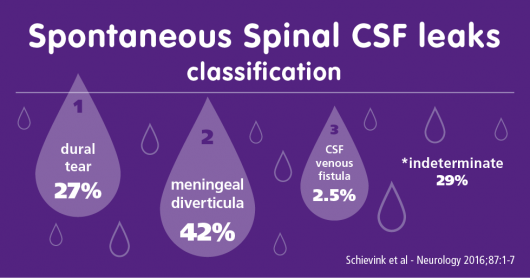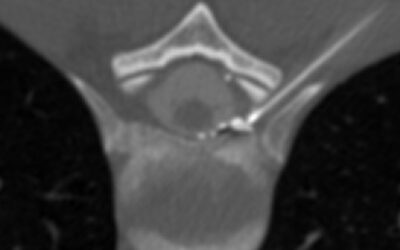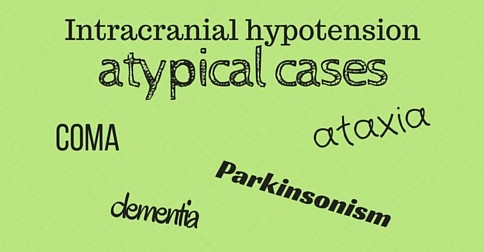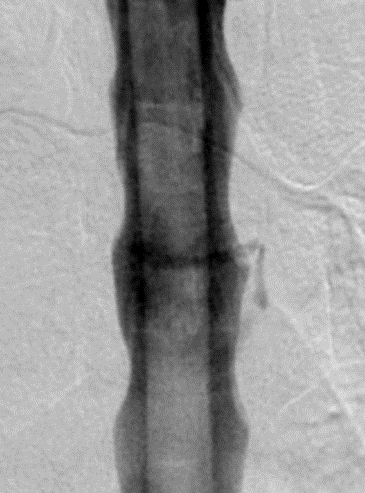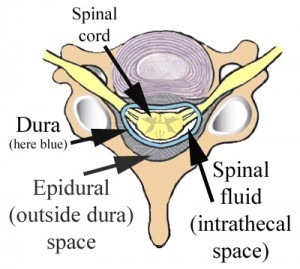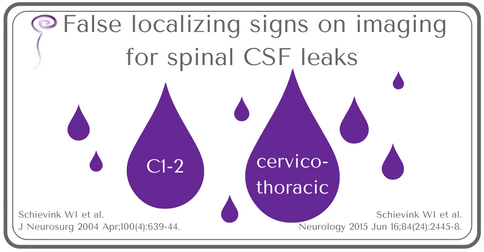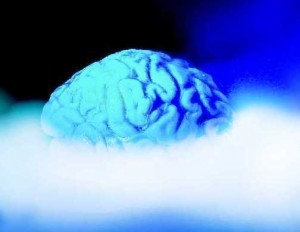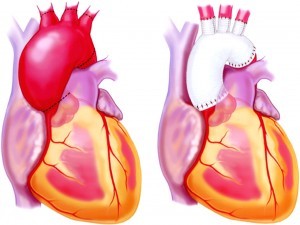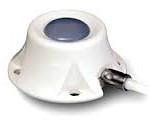This is a VERY important paper by Schievink and hs colleagues outlining a classification of various types of spontaneous spinal CSF leaks. This does not apply to iatrogenic or traumatic leaks. The classification was based on a large sample size of well over 500...
New Publication
Expanding Epidural Patching Techniques for Spinal CSF Leak
CT-fluoroscopy-Guided Ventral CSF Leak Patching Shared with permission from Timothy Amhrein, MD and Duke University Medical Center Several centers in the USA and elsewhere that see larger numbers of patients with spinal CSF (cerebrospinal fluid) leaks are continually...
Case Report: Tremor and Ataxia from Spontaneous Intracranial Hypotension
This 2016 paper from the open-access journal Tremor and Other Hyperkinetic Movements is a case report about a 68-year-old man who developed tremor and ataxia and did not have a positional headache. It was not until his MRI was done that the underlying cause of...
Epidural Patching with Blood + Fibrin Sealant
Physicians at Mayo Rochester have reported on a small series of 8 patients with refractory headache after epidural blood patch. They were then treated with a combination of blood and fibrin glue for epidural patching. Four of eight patients had improved pain scores at...
Atypical and serious cases of intracranial hypotension
This recent paper highlights that the clinical presentation of spontaneous intracranial hypotension secondary to spinal cerebrospinal fluid leak may include serious patterns considered atypical. The authors compared the clinical and imaging findings of 8 atypical...
Digital Subtraction Myelography
A variety of spinal imaging techniques are currently employed in patients with spontaneous intracranial hypotension to localize spinal CSF leaks. Digital subtraction myelography (DSM) is being used increasingly, most often to visualize the origin of rapid leaks. A...
Epidural Steroid Injections: Risk vs Benefit
Serious risks associated with epidural steroid injections, even when rare, must be weighed against the limited potential for benefit.
Imaging findings in spinal CSF leaks can be misleading
The initial treatment of spontaneous spinal cerebrospinal fluid (CSF) leaks does not require localization of the CSF leak with spinal imaging, since one or more non-directed epidural blood patches are often effective. In those situations where conservative measures or...
Investigating Brain Fog in Spontaneous Intracranial Hypotension
Numerous authors have reported on impaired cognition in patients with spontaneous intracranial hypotension secondary to spinal CSF leaks. The effects on cognition can range from subtle to severe. There are reported cases of severe impairment mimicking dementia. These...
New Case Report: SMAD3-related Aneurysms-Osteoarthritis syndrome
A new case report describes the case of a 55 year old man who presented to the emergency room with a positional headache. He was diagnosed with Spontaneous Intracranial Hypotension (SIH) with bilateral subdural fluid collections. Spinal imaging failed to reveal the...
Changing the Needle for Lumbar Punctures
by Connie Deline, MD This new prospective study deserves a spotlight here. Lumbar puncture is the most common cause of a spinal CSF leak and is known as a post-dural puncture headache (PDPH). Because smaller needles and non-cutting needles have been shown repeatedly...
Epidural Saline Infusion System for Selected Patients with Intractible Intracranial Hypotension
This new publication abstract has been added to our Publications Abstracts resource page. Carefully selected patients with intractable intracranial hypotension may have improved quality of life with a long-term implanted epidural catheter for infusion of saline. The...

